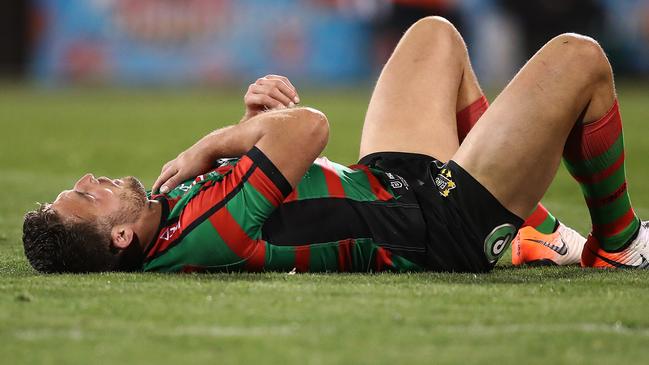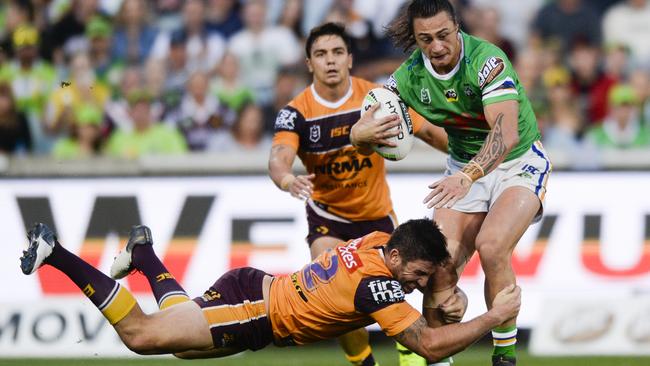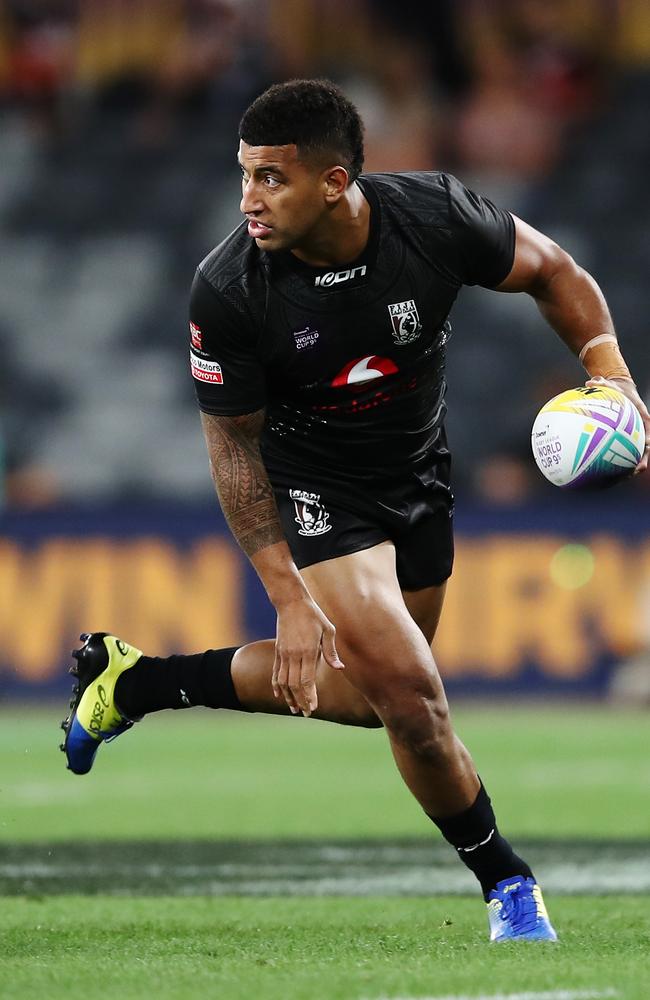NRL Physio analyses why the game is plagued by a shoulder injury epidemic
The NRL off-season has been plagued by players requiring shoulder reconstructions. NRL Physio Brien Seeney analyses why rugby league appears to be getting hit harder by frequent shoulder injuries.

NRL
Don't miss out on the headlines from NRL. Followed categories will be added to My News.
It is the injury scourge taking down many of the NRL’s biggest stars.
South Sydney’s Sam Burgess and Brisbane’s Matt Gillett were both forced into early retirement because of shoulder injuries this month.
Last week we discovered Manly’s Jake Trbojevic and Addin Fonua-Blake needed surgery.
Now there’s revelations Canterbury’s Kieran Foran needs two shoulder operations that will keep him out for the entire 2020 NRL season.
Stream the 2019 Oceania Cup Live & On-Demand on KAYO SPORTS. Get your 14 day free trial and start streaming instantly >

They were just the latest in a horror year for shoulder injuries with Greg Inglis (South Sydney) ending his career and Gareth Widdop (St George Illawarra), Manase Fainu (Manly), Isaah Yeo (Penrith), Kerrod Holland (Canterbury), Dale Copley (Gold Coast), Shannon Boyd (Gold Coast) and Karl Lawton (New Zealand) needing reconstructive surgery.
So what causes these injuries, and what can be done to reduce their severity and frequency?
THE INJURY EXPLAINED
The shoulder is a ball and socket joint that sacrifices stability for mobility, and in a contact sport like rugby league athletes have an increased risk of injury due to the repeated exposure the shoulder joint has to traumatic load.
Cartilage (labrum): The rim around the socket of the shoulder joint, its purpose is to help guide movement as well as expand the depth of the socket to increase stability of the joint. It is damage to, and degeneration of the cartilage that can lead to early onset of osteoarthritis in the shoulder, and has been the main reported cause behind the retirements of Inglis and Burgess.
Ligaments/connective tissue (capsule): The main static stabilisers of the shoulder joint.
Muscles/tendons (rotator cuff): Help stabilise the shoulder joint during movement of the arm by controlling the position of the humerus (ball) within the shoulder socket.

HOW DOES IT HAPPEN?
Players are becoming bigger, faster and stronger, resulting in more explosive collisions.
While there can be an obvious incident (dislocation/subluxation) that is the cause of damage to the shoulder joint, accumulated trauma to the joint can also cause pain and instability over time.
We have seen examples of an isolated incident (Kieran Foran) and accumulated trauma (Jake Trbojevic) result in shoulder reconstruction surgeries.

The most common shoulder injury mechanisms in the NRL are:
•The try-scorer: When a player lands heavily with their arm outstretched above their head, most commonly when getting tackled or scoring a try.
•The tackler: The arm hanging out to the side during a tackle is forced posteriorly. As well as the try scorer, the tackler puts a lever force on the shoulder joint and commonly causes shoulder dislocations/subluxations.
•Direct impact: Blow to the arm, elbow or shoulder resulting in compressive forces to the shoulder joint. Usually body to body collision of a tackle or landing on the ground.

THE TREATMENT
Treatment is dictated by the overall stability of the shoulder joint on physical examination, as well as the severity of damage to the structures in the shoulder (via scans like MRI).
If the shoulder appears inherently stable and the damage to the joint is minimal, strengthening rehab exercises are usually trialled for three to six weeks.
However if this rehab fails, or the physical exam and scans suggest there will be a high risk of dislocation, instability or further damage moving forward surgery is usually required.
Shoulder reconstruction surgery involves an open or arthroscopic (keyhole) procedure to repair the damaged cartilage or ligaments, while some players may require a rotator cuff repair as well. This has a recovery range of three to six months.

PREVENTING INJURIES
Strengthening the musculature surrounding the shoulder is extremely important. Strength in these muscles provides significant stability and protection to the shoulder joint, especially during the high impact forces in rugby league.
Working on tackling and landing technique to avoid unnecessary load while the arm is in vulnerable positions away from the body reduces the exposure of the shoulder joint to at risk situations.
Shoulder strapping and braces provide some stability, restrict specific movements and can help a player return to training and playing sooner following an injury. However both braces and strapping have been shown to loosen with physical activity.
Shoulder padding is not the answer for shoulder joint injuries; while the padding can help prevent bruises it provides no additional stability to the shoulder joint itself.
The challenge with injury prevention is balancing with performance.
Strategies like avoiding loading of the shoulder with the arm away from the body or using strapping/bracing restricts range of movement and can reduce the risk of injury, but performance can suffer.
Restricting the shoulder range too much means players may not be able to complete that all important diving cover tackle, or reach out and score a spectacular fingertips try.
Many players taking pride in playing through the pain of niggles and sometimes even significant injury. Thanks in great part to the advancements of medical treatment, rehab and sports science we are still seeing careers last longer than they may have 30 years ago.
But the increased exposure to collisions can result in more frequent shoulder injury and decreased function.
While there are recognised strategies to try to reduce the occurrence and severity of these issues, in a competition like the NRL where players are required to collide, tackle and wrestle countless times there will unfortunately always be some increased risk of serious shoulder injury.
Follow NRL Physio on Twitter: @nrlphysio


